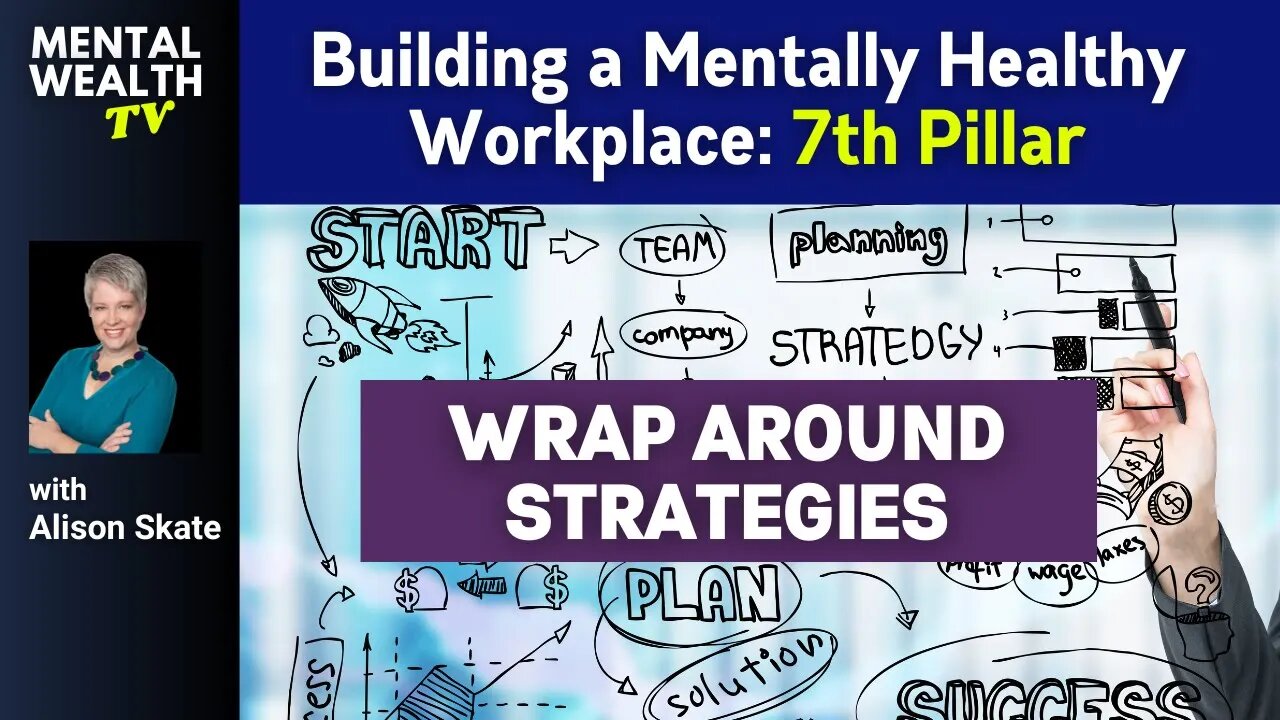Premium Only Content

Building a Mentally Healthy Workplace - Pillar 7: Wrap Around Strategies
How does your organization demonstrate a commitment to developing its mental wealth?
A clear telltale sign is a preference for considered mental health initiatives over band aid solutions. That demonstrates an organization’s commitment to developing its mental wealth. And these carefully considered and designed mental health initiatives must be ‘wrap around strategies’. That means that your mental health initiatives are, at its basic core, complex and have to take a holistic view of a person’s journey through a mental health problem. As I mentioned in the previous Pillar, awareness programs are useful, but they can’t be the only strategy. Likewise with Employee Assistance Programs. And with anti-bullying and harassment training. And with wellness programs. And so on. Each of these initiatives by themselves is useful, but when used in isolation, they have little sustainable impact.
- We need to think more broadly than the bookend strategies of making people aware of the potential for trouble and mopping up after it happens.
- You need to look at your prevention strategies. What are those? Are they a part of a complete strategy or an add on?
- You need to look at your early intervention strategies. Do they move beyond the basis of EAP referral and leave?
- You need to look at your wellness programs. Are they eclectic and are they giving you the results you are after?
- You need to look at your leadership development programs. Are they complete?
- Do these programs exist? Are they being used?
Building a mentally wealthy culture doesn’t require a massive bolt on program, but it does require you to ensure the psychological needs of a diverse workforce are catered for. Diverse not just in age, gender or ethnicity, but diversity in work style, talent and life outlook.
Recognition of mental wealth is a paradigm shift. We realize that. So kudos for you still being here, not throwing the book down and running away. What you have been told about leading successfully: the macho, tough leadership style (even when dressed up with some sophistication and political correctness) creates less valuable companies in the long run than displaying genuine compassion and a willingness to work with people to achieve a common goal. This is not a ‘soft’ approach, it’s a proven approach. One that gets results.
And that’s such a game changer. Highly worth it, don’t you think?
--------------------------------
PS. If you want more information about the course Alison is facilitating here please visit https://www.thewmhi.com/leaders-masterclass/
Read about the 7 Pillars of Building a Mentally Healthy Workplace in the book - Mental Wealth: An Essential Guide to Workplace Mental Health and Wellbeing by Peter Diaz and Emi Golding
https://www.amazon.com/Mental-Wealth-Managers-Workplace-Wellbeing/dp/1642793663
Now also available in audio format: https://www.audible.com/pd/Mental-Wealth-Audiobook/B09YFKG7H7
*More Workplace Mental Health Videos*
Exploring The Psychology of Difficult People and How To Deal with Them
►https://youtu.be/5oGq3gFKnr8
What is the difference between normal stress and abnormal stress?
►https://youtu.be/pBdimStH1S0
Why are People Addicted to Negativity?
►https://youtu.be/F_e-gpXQP20
From Mental Health to Mental Wealth (Book Review by Jeff Fallon)
►https://youtu.be/HtpY8yHxQlk
➔ Stay Connected with the Workplace Mental Health Institute
► Facebook: https://www.facebook.com/WorkplaceMentalHealthInstitute
► Twitter: https://twitter.com/mentalhealthrec
► Instagram: https://www.instagram.com/workplacementalhealthinstitute/
► LinkedIn: https://www.linkedin.com/company/workplace-mental-health-institute
► Website: https://www.thewmhi.com/
#mentalhealth #mentalhealthintheworkplace #workplacewellbeing
-
 2:46
2:46
BIG NEM
15 hours agoDiscovering RAKIJA: The Holy Liquer of the Balkans
29.2K3 -
 1:11:38
1:11:38
Film Threat
20 hours agoCHRISTMAS DAY CHILL STREAM WITH CHRIS GORE | Hollywood on the Rocks
148K33 -
 14:22:40
14:22:40
The Quartering
1 day agoYule Log Christmas MAGA Edition With Memes! Come Hang Out!
236K32 -
 38:41
38:41
MYLUNCHBREAK CHANNEL PAGE
1 day agoTimeline Begins in 1800? - Pt 1 & 2
115K71 -
 1:23:41
1:23:41
Game On!
1 day ago $13.99 earnedNetflix NFL Christmas Games Preview and Predictions!
98.9K13 -
 2:05:07
2:05:07
Darkhorse Podcast
1 day agoWhy Trump Wants Greenland: The 257th Evolutionary Lens with Bret Weinstein and Heather Heying
327K906 -
 8:50:58
8:50:58
Right Side Broadcasting Network
1 day ago🎅 LIVE: Tracking Santa on Christmas Eve 2024 NORAD Santa Tracker 🎅
423K71 -
 2:48
2:48
Steven Crowder
1 day agoCROWDER CLASSICS: What’s This? | Nightmare Before Kwanzaa (Nightmare Before Christmas Parody)
370K13 -
 33:49
33:49
Quite Frankly
1 day agoThe Christmas Eve Midnight Telethon
152K31 -
 2:12:46
2:12:46
Price of Reason
1 day agoAmber Heard BACKS Blake Lively Lawsuit Against Justin Baldoni! Is Disney CEO Bob Iger in TROUBLE?
95K27